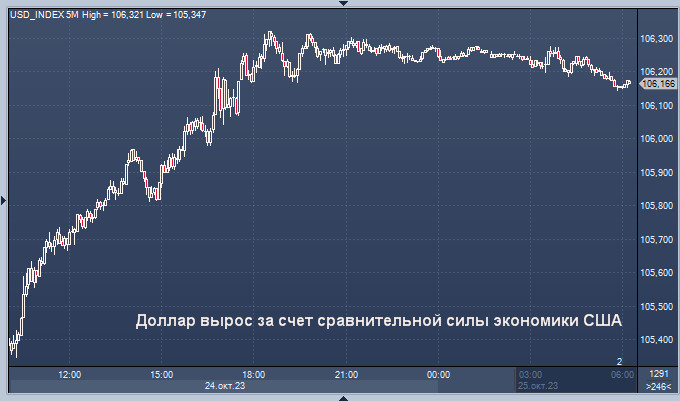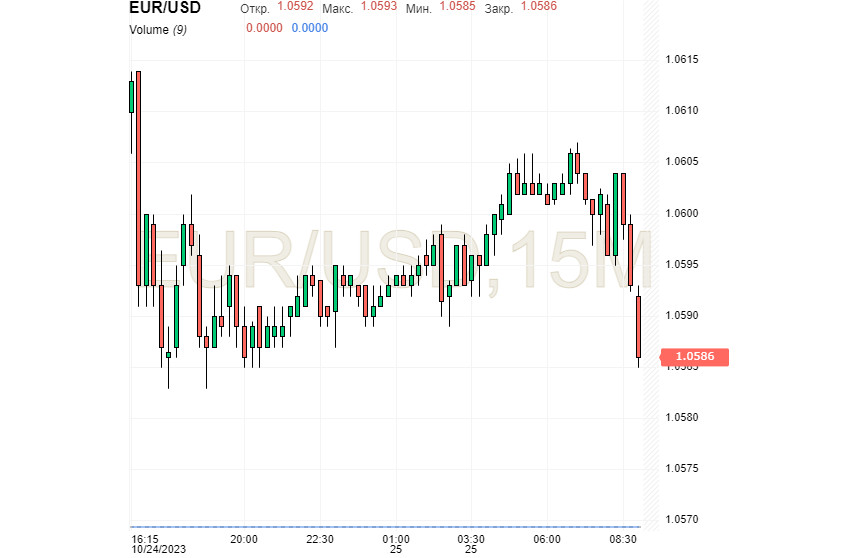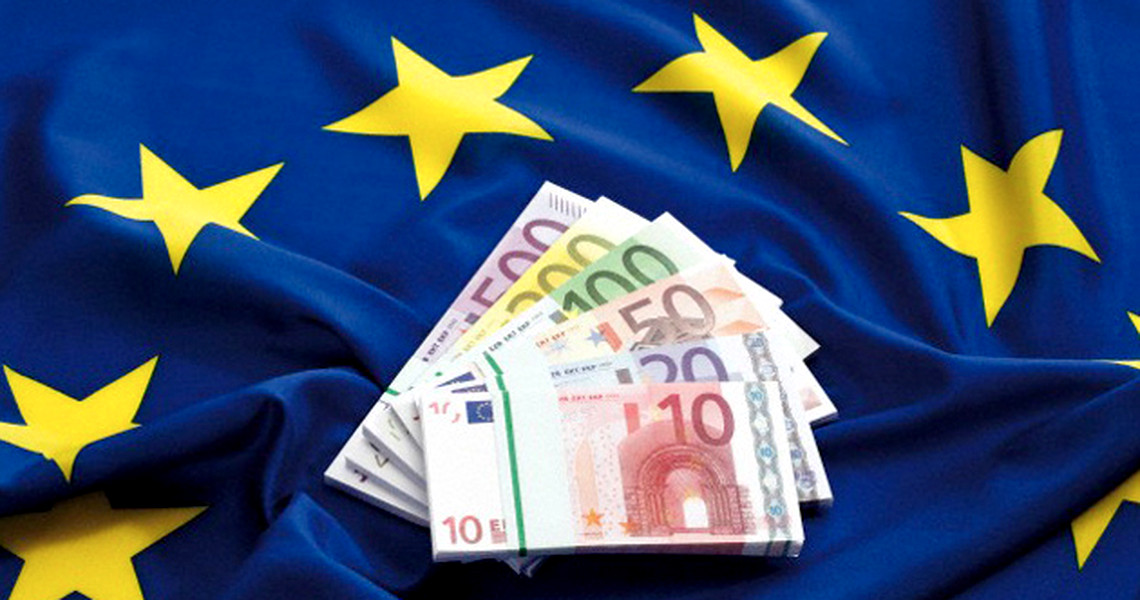
The European currency is once again falling against the US dollar. After a recent triumph, the euro stepped back while the dollar gained momentum. Analysts anticipate the EUR/USD pair to stay within its current price range, showing short-term spikes in the near future.
On Wednesday, October 25th, the US dollar regained its strength, boosted by solid economic data from the US. Meanwhile, the euro failed to maintain its upward trend amid negative reports from the eurozone and a downturn in the outlook for European economic growth.
According to the eurozone's PMI data, business activity in the private sector continued to decline in October. Reports from S&P Global showed deteriorating growth prospects in Germany and EU countries. Business conditions in the eurozone continue to worsen.
According to S&P Global, data on the manufacturing PMI, services PMI, and composite PMI is pointing to a high risk of recession. In October, the composite PMI in Germany and the eurozone dropped to 45.8 points and 46.5 points, respectively. These figures were worse than forecasts and the previous month's reports. Analysts believe this indicates that business activity in the EU's private sector is rapidly declining. The situation was further exacerbated by a decrease in Germany's GfK consumer confidence index.
This had a negative impact on the euro, which dropped after reaching a daily high of 1.0700, facing selling pressure. This allowed the US Dollar Index (USDX) to settle at 106.15, partly thanks to the strengthening of the American economy.

Experts highlight the increasing business activity in the US. Reports indicate that this metric improved in October, as the country's manufacturing sector emerged from a five-month slump and is picking up pace.
The US economy continues its steady growth. According to the current PMI reports, business activity in the country increased, with the manufacturing PMI rising to 50 points, surpassing the 49.5-point forecast. The services PMI in the US was 50.9 points, better than the 49.8-point prediction. Ultimately, the composite PMI grew to 51 points from the previous 50.2 points.
Against this backdrop, the yield on US Treasury bonds surged to 4.88%, responding positively to the macroeconomic data. This provided significant support for the US dollar, pushing the dollar index up by 0.64% to 106.27.
The EUR/USD pair lost its upward momentum after approaching the 1.0700 level. Following the release of the eurozone PMI reports, the pair reversed towards the 50-day moving average (DMA) and fell below the crucial 1.0600 level. In this light, the yield on US Treasury bonds rose, reflecting the business activity data from the US. On Tuesday, October 24, the EUR/USD pair dropped by 0.72% to 1.0591 after peaking at 1.0694. Nevertheless, the pair continues to seek a way out of its downward trend. On Wednesday, October 25, it hovered around 1.0586, attempting to break from its current range.

Analysts believe that the EUR/USD pair is currently on a downward trajectory, but a correction might occur soon. Given the deteriorating fundamental economic conditions in the EU, the pair's dynamic is worsening. Technical charts indicate that the support level was near 1.0571 at the beginning of the week, then at the previous cycle's low of 1.0495. Preliminary estimates suggest that the next target for the EUR/USD could be the 2022 low of 1.0448. If the EUR/USD stays above 1.0600, it may test the 1.0639 high. If conditions improve, experts believe the 1.0700 barrier can be overcome.
The market is closely watching the ECB meeting scheduled for Thursday, October 26. The regulator is expected to maintain interest rates at their current levels. However, experts believe that the ECB might leave room for maneuvering, potentially increasing the key rate if needed.
Analysts are concerned about the clear signs of a recession in the eurozone. Given this, currency strategists at Commerzbank do not anticipate the ECB to raise rates in the upcoming months. They believe the regulator is likely to revise its economic forecast downward. In its September assessments, the ECB assumed the eurozone would avoid a recession. Given this, any further rate hike seems unlikely, Commerzbank concludes.
The bank thinks that the measures the ECB might take will not necessarily be decisive. The main question is how long key rates will remain at this level before another easing occurs. Market participants expect this by spring 2024. If the ECB is cautious in its statements about future economic prospects on Thursday, the euro might take a significant hit.
.
The European regulator has good reasons to delay raising interest rates. However, the conflict in the Middle East, which led to higher energy prices, is a concern for the central bank management, which has been long battling inflation. Given this, many analysts do not expect the ECB to lower its key rate in 2024. If the market adjusts its rate expectations, the euro will receive solid support. Otherwise, the currency might suffer due to mounting rate cut expectations amidst disappointing economic data.
Previously, the ECB indicated a possible pause in rate hikes. So, markets anticipate the rates to remain unchanged in the upcoming ECB meeting. Still, another rate hike in the short term should not be ruled out.
Currently, Europe imports energy and is more vulnerable to this issue than the US. The EU's economy is more sensitive to inflation fluctuations caused by tensions in the Middle East compared to the US economy. Notably, the PMI index for the eurozone's manufacturing sector dropped to a three-year low, suggesting the euro bloc could slip into a recession.
Analysts believe that this development will impact oil demand. Nevertheless, energy prices are not the decisive factor for the ECB's inflation forecast, as they are offset by strong deflationary components. Next year, the European regulator expects core inflation to decrease to 3.2%. This is significantly below the average of 5.6% recorded in 2023
 English
English 
 Русский
Русский Bahasa Indonesia
Bahasa Indonesia Bahasa Malay
Bahasa Malay ไทย
ไทย Español
Español Deutsch
Deutsch Български
Български Français
Français Tiếng Việt
Tiếng Việt 中文
中文 বাংলা
বাংলা हिन्दी
हिन्दी Čeština
Čeština Українська
Українська Română
Română

